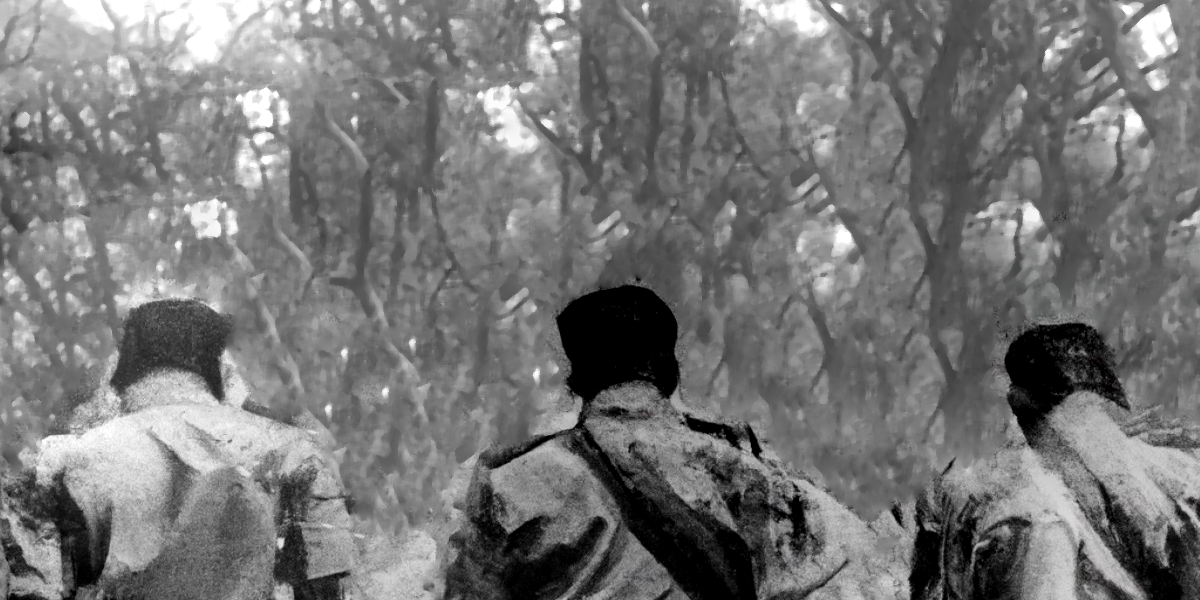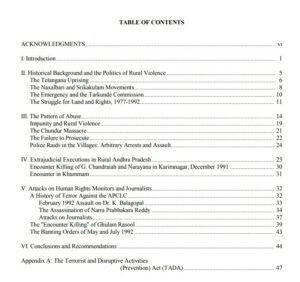The 14 victims of the encounter on 6 January 1992 might have been forgotten, the perpetrators might have retired from their jobs, but the blot on rule of law cannot be erased. The significance of the Pagideru encounter lies not only in its scale, but also in being one of the first-such incidents that attracted the attention of international human rights agencies.

Police encounters have steadily risen in Tamil Nadu during the DMK rule.
The sixth of January marks the anniversary of the biggest-ever, till that time, encounter killings in the history of the revolutionary movement in the erstwhile Andhra Pradesh. On this day in 1992, 13 Naxalites (the nomenclature of ‘Maoists’ was not in vogue at that time) were killed in the encounter at Pagideru, in the forests of Manuguru in Khammam district.
Remembering the 6 January Pagideru encounter at the time of claims by the Telangana state police, in their annual review this year, that they were successful in creating a Maoist-free state, gains significance as it was one of the major onslaughts against the movement that led to the present status.
Though many more massive encounter killings took place later, Pagideru stands as the beginning of killing a large number of activists at one go.
As usual, police released a press statement that “armed Naxalite squads planted a land mine which exploded and caused minor damage to a police vehicle travelling on the road”. They claimed that three Naxalite squads numbering up to 100 men engaged the police and the police “opened fire and killed thirteen Naxalites”.
This narrative, of Naxalites initially opening fire on the police and the latter returning the fire in self-defence and eventually finding dead bodies of the former, without even a scratch to a single police official, is repeated hundreds of times since the first encounter on 27 May 1969 when Panchadi Krishnamurty and six others were arrested at Sompeta Railway Station and killed near Jalantrakota hills in Srikakulam district with the same story.
In the following five decades, the generic English word ‘encounter’ — which ought to mean ‘chance meeting’ — has gained the specific meaning of ‘extra-judicial, point-blank killing of a person in custody’ spiced with a fictitious story.
Suspecting a similar concoction in the Pagideru killings too, the Andhra Pradesh Civil Liberties Committee (APCLC) sent a fact-finding committee to look into the police claim and came out with a detailed report published in its organ Swechcha, January–April 1992 issue. The APCLC, along with the Organisation for the Protection of Democratic Rights (OPDR), published ‘Suppression Naxalism – What it really means’ in February 1992 and included the report on the Pagideru encounter.
According to the APCLC, there was no exchange of fire at all and the police did create an elaborate scene to make believe that there was an exchange of fire.
The APCLC gathered that 12 boys and a girl from Warangal, Nalgonda, and Nizamabad districts began their journey from Jangaon towards Bhadrachalam in a Mitsubishi van on 5 January.
The APCLC also said that all the youth were going to join the squads of CPI (ML)(Peoples’ War) and were carrying posters, pamphlets, cassettes and even newly stitched olive green uniforms. (One has to remember that in 1992 January when this incident happened, there was no official ban on Peoples’ War. The ban was promulgated subsequently on 21 May 1992). They neither had any weapons nor training in using them.
The fact-finding team also gathered the names and identities of the youth: T Ramaswamy, B Ramulu, B Ashalu, SS Sammaiah, P Ramesh, S Raghupati Reddy, K Bhaskar, T Komuraiah, Satyanarayana, K Mallaiah, and Pochaiah from different villages in Warangal district, Jaya from Nalgonda district and P Bapu Reddy from Nizamabad district. All of them came from poor peasant families and were in their late teens or early twenties.
The van was intercepted on the way and the inmates were arrested on the same day. A decision to kill them seems to have been taken and all of them were shot dead near Ramanjaram.
Though Pagideru, a hamlet of Ramanjaram, is away from the killing site, it was given the name of Pagideru encounter with a purpose as Pagideru was known for its Naxalite sympathies since 1969, said the APCLC.
The youth were forced to wear the new uniforms they were taking and shot in that attire to show that they were activists clad in olive-green. People from Ramanjaram told the fact-finding committee that they heard the sounds of firing for about 45 minutes from 5.15 in the evening.
Around 7 pm they also heard a blast sound and sporadic shots till 10 pm. The APCLC pointed out these discrepancies and questioned the mine blast theory on the ground that firing preceded the blast sound by at least two hours.
The APCLC also found the dead body of the van driver, who did not have anything to do with politics and just offered his van and driving services to the group, two days later near Tulasipaka after Bhadrachalam, in a make-believe accident. Thus, casualties of the Pagideru encounter went up to 14.
The significance of the Pagideru encounter lies not only in its scale and brutality, but also in being one of the early such incidents that attracted the attention of international human rights agencies.

Human Rights Watch/Asia report on police killings in Andhra Pradesh, in which the Pagideru encounter is mentioned (Human Rights Watch)
In the subsequent three decades, there have been a number of interventions from Amnesty International, Human Rights Watch, Reporters without Borders, International Association of People’s Lawyers, etc., but at that time, this kind of international response was not there.
The New York-based Human Rights Watch/Asia, in its report ‘Police Killings and Rural Violence in Andhra Pradesh’, published in September 1992, carried a detailed report on the Pagideru encounter under the chapter ‘Extrajudicial Executions in Rural Andhra Pradesh’. The 52-page report was written by Patricia Gossman, Research Associate for Asia Watch, who visited various places in Andhra Pradesh and met several people including police and civil officials to prepare the report (this writer had accompanied her to Karimnagar).
The Pagideru encounter victims might have been forgotten, the perpetrators might have retired from their jobs, but the blot on rule of law cannot be erased.
(N Venugopal is the Editor of Veekshanam, Telugu monthly journal of political economy and society. These are the personal views of the author)

Apr 25, 2024

Apr 25, 2024

Apr 25, 2024

Apr 25, 2024

Apr 25, 2024

Apr 25, 2024